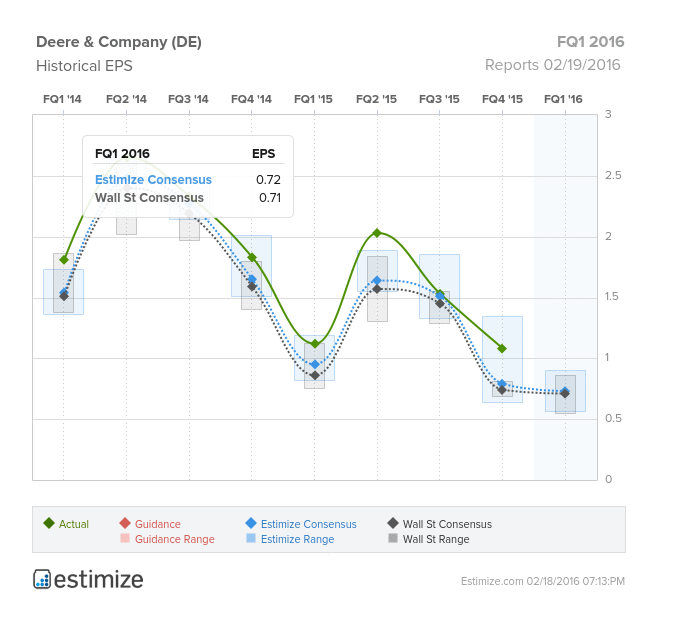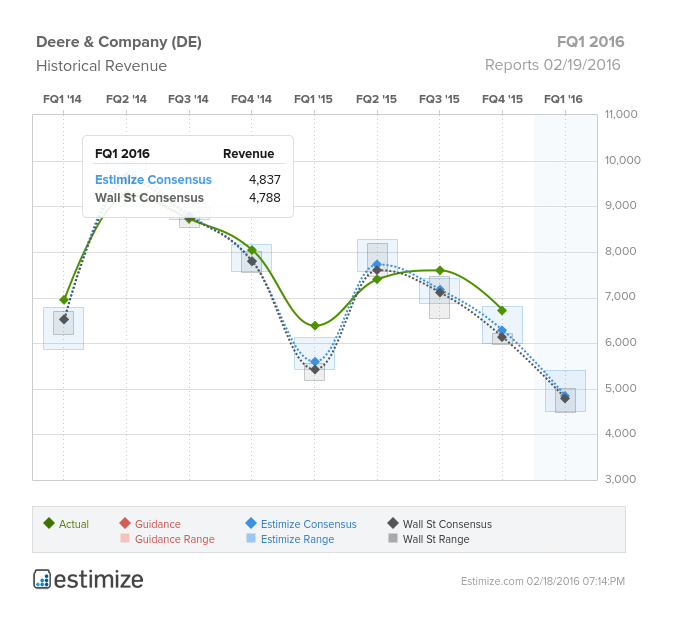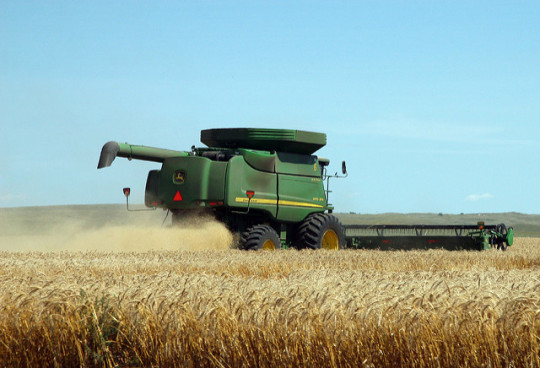
Photo Credit: SnoShuu
Deere & Company (DE) Industrials – Machinery | Reports February 19, Before Market Open
Key Takeaways
Deere & Company, best known for John Deere tractors, is prepared to report fiscal first quarter earnings February 19, before the markets open. Despite coming off two consecutive quarters of delivering positive earnings surprises, share prices of Deere have fallen 14.7% in the past 6 months. The company is facing a significant amount of risk from its financial services sector which is expected to drag down Deere’s quarterly earnings.

The Estimize consensus is calling for EPS of $0.72, 1 cent higher than Wall Street, and revenue expectations of $4.838 billion, roughly $50 million more than the Street. Compared to FQ1 2015, this represents a projected YoY decline in EPS of 36% and revenue of 24%. That said, Deere has consistently beat on earnings, besting Wall Street’s EPS and revenue estimates, 83% and 75% of the time, respectively. Deere should continue to see its core business suffer in the near term while focusing on long term prospects.

In recent years, Deere has become over-reliant on its financial segment to carry earnings. The financial services segment primarily finances sales and leases of new and used equipment and accounts for almost 40% of the company’s operating profits. Last quarter this segment was down 14% YoY, due to the unfavorable impact of currency headwinds. This sector is expected to continue to struggle as interest rates rise, leading to a huge increase in leasing activity. Meanwhile, Deere is expecting declines in total equipment sales for fiscal 2016. Lower commodity prices, low farm income and weak macroeconomic conditions have put pressure on the company’s growth. Until Deere’s long term investments take effect, the company should expect sluggish growth.














Leave A Comment